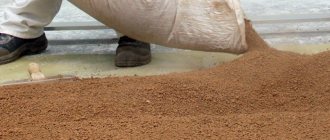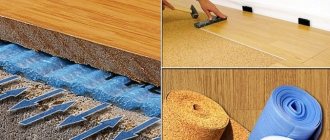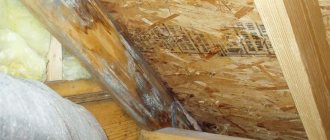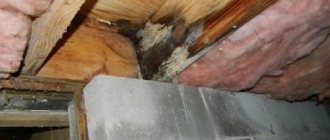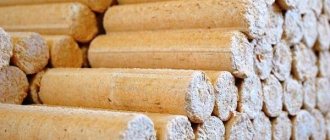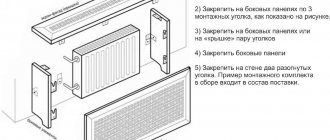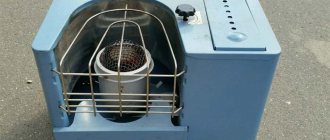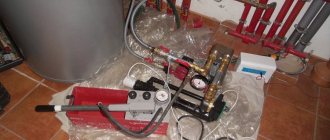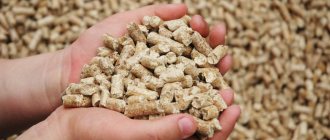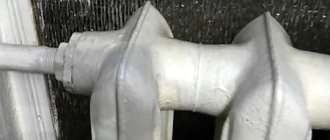Why do you need to insulate the blind area?
As a result, when small and few cracks appear on the wall of a house, the number and thickness of which quickly grows, they are surprised - why is this happening? It's actually simple. Water, penetrating underground and contacting the foundation, saturates the concrete. The night cold causes the water to freeze. Microcracks appear in the concrete structure, into which even more water is collected. In countries with such a difficult climate as Russia and Belarus, this is especially true. After all, daily changes often reach 10-20 degrees, which leads to rapid destruction of concrete. The negative impact is especially noticeable if a strip foundation was used during construction - the most common in private construction.
If a blind area is installed around the house, the impact of moisture is reduced - it is effectively removed from the foundation. And yet, water spreads throughout the ground, getting under the blind area, saturating the concrete base. Therefore, it is necessary to reduce daily temperature changes, preventing the foundation temperature from falling to negative temperatures. For this, insulation is used. The insulation can be various materials. But, before you start work, you need to know exactly how to properly insulate the blind area around the house. High-quality thermal insulation material allows you to retain heat, reducing the impact of cold outside air on the foundation of the house. The heat coming from the ground and leaving the walls is reliably retained - this is enough to prevent the foundation from freezing.
It is important that an insulated blind area can significantly reduce heat loss at home, saving you money. Thanks to the insulation, the foundation, and therefore the ground under the house, maintains a higher temperature. This ensures a reduction in heat loss - you do not need to constantly warm the ground under your house to keep the rooms warm and cozy.
Features of insulating a blind area with your own hands
When insulating the blind area of a shallow house foundation, you can ignore soil freezing.
Thus, even if you spend money on installing an insulated blind area, the savings will be very significant. Insulation is a costly undertaking, but unreasonable savings can render all efforts futile. The work will only make sense if you simultaneously insulate the blind area, basement and foundation with your own hands.
The best option would be to insulate the blind area with extruded polystyrene foam. Penoplex insulation is carried out in places where it is impossible to use other insulation materials. For example, in excessively humid conditions.
In addition, it has other advantages:
- high compressive strength;
- zero water absorption and vapor permeability;
- durability;
- ease;
- frost resistance;
- low flammability;
- environmental friendliness.
To insulate with penoplex with your own hands, you need to use 50 mm sheets in two layers or 100 mm sheets in one layer. The joints of polystyrene foam sheets will be protected by high-density polyethylene. To do this, it is laid on top of a layer of polystyrene foam boards.
PPU insulation
Polyurethane foam can be applied to any complex surface and therefore it is used almost everywhere in house construction.
Positive properties of polyurethane foam:
- Has low thermal conductivity;
- Biologically resistant;
- Resistant to decomposition;
- Used at both low and high temperatures;
- Requires 2-3 hours to complete all work;
- Resistant to fire;
- Has low water absorption;
- The application layer has integrity, without gaps.
The disadvantage is the toxicity of one of the components of the material, which requires protective measures when spraying the product.
This is one of the most common materials for do-it-yourself insulation of different parts of the house. It is effective and fireproof. It differs in the size of the granules (from 2 to 40 mm): gravel, crushed stone and sand. Expanded clay sand is used as a filler for concrete solutions. Expanded clay gravel is more frost-resistant and water-resistant than sand and crushed stone. It is used mainly for do-it-yourself insulation of basements, garages, as well as basements and blind areas.
Insulating a blind area with expanded clay does not require large expenses or special knowledge. A layer of clay and waterproofing is laid in the excavated recess for the blind area, with sand and sand on top as protection against subsidence. Then expanded clay and again a layer of dronite and sand. On top there is crushed stone for the design of the territory.
An important stage of insulation is the installation of drainage. The groundwater level in wet areas is about 1 meter. When wet, expanded clay loses most of its thermal insulation properties, because of this, water should be drained from the house. A trench is dug at a distance from the base of the house, geotextiles, a layer of crushed stone and pipes are placed in it. Drainage pipes are covered with a layer of crushed stone, the edges of geotextiles and covered with sand.
Externally, the blind area is a path around the house made of paving slabs, concrete or asphalt. Some believe that it is needed only to make it convenient to walk around the home in a circle, doing evening or morning exercise.
Others think that this design is part of the design of the facade of the house and the landscape design of the site.
The blind area is a complex and multi-layered structure.
But I can tell you with confidence that the visible part of the blind area is just the tip of the iceberg. But in fact, the “track” is a multi-layer cake made of different materials, which performs several important tasks:
- protects the buried part of the foundation from getting wet as a result of the seepage of atmospheric moisture;
- prevents freezing of the foundation of the house in winter;
- increases the service life of important building structures (foundation and basement).
A properly designed blind area (with insulation) consists of several layers (they are indicated in the diagram).
A blind area is a device made of paving slabs.
I'll tell you in more detail about each.
- Bottom layer of geotextile. It is necessary to create a reliable foundation on which the entire future multilayer structure will be located. The second purpose is to separate the bulk fraction of the next layer and the soil.
- Sand filling. Made from fine-grained river sand. The recommended thickness is 15 cm. This is enough to prevent movement and shrinkage of the base, which can lead to cracking of the blind area.
- Thermal insulator. We will talk about the choice of material in more detail, but now I can say that, for example, polystyrene foam or extruded polystyrene foam (penoplex) are perfect as insulation here.
- Polyvinyl chloride film. It is necessary to protect the insulation from moisture and separate it from the next layer of sand.
- Sand filling. Again, it is made from fine-grained sand. Layer - 15 cm. Purpose - uniform distribution of the load that will be exerted on the insulation during operation. If sand is not poured, the foam may fail in some places and the blind area will have to be insulated again.
- Geotextiles. A separator between the layer of bulk material and fine crushed stone on which paving slabs will be laid.
- A soft layer of fine gravel. It is necessary in order to lay decorative paving slabs correctly and evenly.
Concrete
Although there is now a very wide choice of materials and design options for the blind area, most homeowners prefer a concrete design. Such systems are laid on an underlying layer of clay 150 mm thick. In the case of heaving soil, add an 80 mm layer of sand to the very bottom.
The finished concrete coating is not durable and its slabs will quickly collapse if expansion joints are not provided between them during installation every 3 meters. They are filled with wooden slats, previously coated with bitumen. Having installed a pair of such slats on an edge, concrete is poured between them. Another way to organize seams is to use a mesh of reinforcement laid with large overlaps.
In the case of arranging a blind area with your own hands, when constructing it, you can prevent the possibility of water absorption by filling it with cement. Next, the fresh coating is covered with a wet cloth and preserved for 10 days. From time to time, the hardening structure must be moistened with water so that the hardening process takes place more slowly and carefully, which will avoid cracking.
In case of hesitation between different types of blind area, it is not recommended to make a choice in favor of concrete, since it does not have the best characteristics, which is expressed, first of all, in the extremely high consumption of material, especially for large volumes of work.
Also, working with it requires significant labor costs, which requires, if not a team of workers, then at least an assistant to carry out the work yourself. Perhaps its only significant advantage is that you can move comfortably on such a surface.
Tiles
The underlying cushion for paving with tiles should have an additional layer on top of crushed stone in the form of a sand backfill, 8 to 10 cm thick. The tiles are always laid from the corner, moving away from you.
The elements are placed using the bricklaying method, that is, with offset seams in adjacent rows. Using a level, check the uniformity of laying of all elements and the overall angle of the blind area they form.
Soft
Concrete pavement is compatible only with non-heaving soils, and for such mobile soils it is better to use a soft blind area. The technology of its installation includes: spreading a layer of clay around the perimeter of the foundation at a certain angle, ensuring water drainage, on top of which a waterproofing coating in the form of a film or glass insulation is placed.
The density value of the first option should be in the region of 250-300 microns.
We invite you to familiarize yourself with the DIY larch font
Clay is again poured onto the waterproofing, this time with a second layer of 10-100 mm, on top of which fine gravel is placed.
Asphalt
Monolithic structures such as asphalt are durable, therefore, with high-quality installation, they last no less time than the building itself. The main disadvantage of such systems is the increased labor and material costs for their construction.
Insulated
Insulation is possible only for hard types of blind areas with concrete or asphalt covering, and for soft and semi-rigid types it will be absolutely ineffective. An insulated option is mandatory for buildings with a basement or cellar.
For this, special heat-insulating materials are used: penoplex, expanded polystyrene or foam glass. They must be laid in the blind area in such a way that a layer of air up to 15 cm thick is formed under it. Roofing felt or PVC film is usually used as a waterproofing material for the coating.
Other popular options:
- Using rubemast for waterproofing. A small sand cushion is covered with this coating with its excess folded onto the foundation of the building. The resulting container is filled with ASG flush with the formwork, after which paving stones are laid as a finishing, protective covering on which you can move.
- With geotextiles, which have the property of allowing water to pass through, but does not allow weeds to grow into the structure, destroying its integrity.
- There are also options for blind areas using corrugated pipes to drain water directly into the sewer and glass bottles as cheap and effective insulation.
Is it always necessary to insulate the blind area?
Although insulation is a fairly simple and not too expensive procedure (if you do it yourself), it is worth considering - is it really necessary? In some cases, it is quite possible to do without it. When can you stop using it?
- If the house is located on solid ground, little subject to seasonal fluctuations;
- If a shallow foundation is used, laid above the soil freezing depth mark;
In these cases, you can refuse to insulate the blind area, saving your time, effort and money.
What material to choose as insulation?
To insulate the blind area, various thermal insulation materials are used. But the most common are the following:
- Extruded polystyrene foam.
- Expanded clay.
Each of these materials has certain advantages and disadvantages. You need to know about both the first and the second in order to make the right choice.
Expanded polystyrene is one of the most common types of foam used in the construction industry. It has extremely low thermal conductivity, is durable, has low moisture absorption and is highly durable; it is not afraid of frequent and severe temperature changes. As a result of the research, it was found that its service life is 60-80 years. To insulate the blind area, it is better to select a material with a higher density; it will be stronger, have lower water absorption, hygroscopicity, vapor and air permeability.
Expanded clay is also a fairly high-quality material. It is cheap, simply poured into a pit near the foundation, is not chemically active, and is not afraid of moisture and temperature changes. The only drawback is the relatively low efficiency - you need to pour a thick layer to provide the required level of thermal insulation to the blind area.
Having studied the basic properties of these materials, you can easily choose the one that is best suited for you. After this, you can safely get to work, having first learned how to insulate the blind area with different materials.
Materials used
Probably, every master has his own point of view on what materials can be used to insulate the blind area. I will not argue with anyone and list the features of each of the insulation products on the market. I’ll tell you only about two options that I consider the most successful.
- Extruded polystyrene foam. Personally, in my opinion, this is an ideal option for insulating a blind area. Moreover, despite the fact that its price is higher than polystyrene foam, the technical characteristics are so good that I would insulate almost everything possible with EPS boards.
Extruded polystyrene foam is an excellent insulation material for blind areas.
It is perfect for insulating basements, buried foundations, walls, flat roofs, car bodies and so on. And all because it withstands external mechanical stress better than other materials and does not change its performance properties when wet.
I will list only the main advantages of extruded polystyrene foam:
- zero coefficient of water absorption (the material has almost no capillaries through which water seeps in, the coefficient of water absorption is no more than 0.3% of the volume);
- high mechanical strength - EPS can be poured with a cement screed under the floor, it retains its shape and properties even under heavy load;
- light weight - the material is easy to transport and store, after installation it practically does not exert additional load on the load-bearing structures of the building;
- ease of processing - the material can be cut with hand tools, and, unlike foam plastic, it does not crumble;
- long service life - the insulation laid in the blind area will last exactly as long as your entire country house;
- environmental friendliness - the material does not harm human health, so it can be used both for insulating blind areas on the street and for thermal insulation of residential premises.
The process of insulating a blind area with penoplex is quite simple.
For work, you can buy sheets of extruded polystyrene foam 100 mm thick. It’s better to purchase products 50 mm thick and lay them in two layers so that the joints run apart.
- Polyurethane foam. It is a polymer foam that is applied to insulated surfaces using a compressor. Polyurethane foam can be used to insulate blind areas, concrete foundations, interfloor and attic floors, walls, roofs, wastewater treatment plants, utilities, and so on.
Polyurethane foam is another excellent thermal insulator for blind areas.
The advantages of using this type of insulation are:
- the possibility of thermal insulation of surfaces of any shape and size;
- the minimum amount of time required to complete the work - I once witnessed the insulation of a blind area using polyurethane foam, and the work took no more than 2 hours;
- homogeneous insulating layer - foam is applied by spraying, therefore it forms a complete heat-insulating layer without seams or joints;
- antiseptic properties - mold and mildew do not develop on the surface of the material;
- low coefficient of thermal conductivity and water absorption - polyurethane foam will perfectly insulate the blind area and retain its performance properties when wet;
- the service life of the material is at least 40 years;
- polymer foam can be used at ambient temperatures from – 60 to 150 degrees Celsius.
We suggest you read: Is it possible to wash your ear in a bathhouse?
Despite all of the above, I still prefer to use extruded polystyrene foam. And all because polyurethane foam has several, as it seems to me, significant disadvantages:
- To activate the composition, it is necessary to mix two components, one of which is dangerous to human health. You can work with polyurethane foam only in protective clothing and respiratory and eye protection.
- The efficiency of the heat-insulating layer directly depends on how correctly the compressor was configured. And for this you need to have some knowledge and experience.
- The cost of the foam is comparable to the price of extruded polystyrene foam, but the hassle of installation, provided that you do the insulation yourself, is much greater. Therefore, if you do the math, the latter option will be cheaper with comparable efficiency.
Spraying polyurethane foam requires special equipment.
In general, I vote for polystyrene foam and below I will tell you how to make an insulated blind area using this particular insulation.
Materials for insulating the blind area must be durable and chemically inert
In many ways, the quality of insulation is determined by the characteristics of the facing coating. Most often it is made from asphalt, paving stones, concrete, paving slabs or artificial stone. It is advisable to choose materials that have tightness and insulating properties.
The following requirements apply to insulation:
- lack of hydrophobicity, ability to withstand moisture;
- biological inertness towards insects and microorganisms;
- resistance to alkalis and acids present in the soil;
- stability of volume and shape;
- long service life;
- sufficient strength to withstand earth pressure.
Not all materials have these characteristics.
Expanded polystyrene is suitable for any type of soil, even with excess moisture
Extruded polystyrene foam (penoplex) is produced on an extruder, through which a foamed polymer mixture is passed under pressure. Finished products are slabs of various shapes and thicknesses. A distinctive feature of the product is the edges in the form of a step. Thanks to this solution, a seamless surface is obtained, characterized by excellent insulating qualities.
In addition, the material has the following advantages:
- waterproof;
- elasticity and slight flexibility;
- low density;
- low thermal conductivity;
- resistance to chemically active environments;
- ease;
- simplicity and high speed of installation;
- immunity to temperature changes;
- long service life of at least 50 years;
- environmental Safety.
Penoizol
Liquid insulation will require special equipment, which can increase construction costs
Penoizol is an effective product that can be applied to smooth and complex surfaces. The liquid under pressure adheres tightly to all substances and, after foaming, fills all voids. The result is a monolithic layer of dense substance with a consistency reminiscent of penoplex.
Advantages of penoizol:
- biological resistance;
- the highest application speed among analogues;
- excellent adhesion to any materials;
- resistance to temperature changes;
- does not decompose;
- no need for preparatory and finishing work.
The disadvantage of the material is its price. Insulation is carried out with household aerosol cans or using industrial equipment. Both are quite expensive.
Styrofoam
It is not advisable to use polystyrene foam due to its fragility
Polystyrene foam is a proven insulation material that has found wide application in private construction. One of its advantages is its affordable price for all categories of the population, which allows the use of polystyrene foam on a large scale. Available in square meter slabs with thicknesses of 50 mm, 100 mm, 150 mm and 200 mm.
In addition, the material has the following advantages:
- ease;
- low thermal conductivity;
- ease of installation;
- durability;
- water resistance;
- environmental cleanliness.
Expanded clay
Expanded clay loses volume over time, so voids may form in the blind area
Expanded clay is the result of vulcanization of a substance based on natural clay. The finished product is a porous round ball. It goes on sale in bulk or packaged in bags. The material has an affordable price, which makes it popular with private developers.
The insulation has the following advantages:
- Ease of use;
- low thermal conductivity;
- environmental Safety;
- biological inertia.
Expanded clay also has disadvantages. Over time, the granules decrease in size, which leads to the formation of voids. In addition, expanded clay is highly hygroscopic and absorbs water well, as a result of which its performance characteristics deteriorate.
The order of work on insulating the blind area of a house
The arrangement of the blind area should begin with drawing up a project. You need to correctly determine the width and depth of the structure. For clay soils you need 1/0.5 meter, respectively, and for sandy soils - 1.5/1 meter. Then you need to select the materials most suitable for specific construction conditions.
To work you will need the following tools:
- concrete mixer;
- building level;
- roulette;
- shovel;
- wood saw;
- hammer;
- axe;
- marker;
- scissors;
- household stapler;
- notched spatula;
- stationery knife;
- paint brush.
Depending on the project, the list can be expanded or shortened.
https://www.youtube.com/watch?v=ci21n_Da11w
Approximate list of building materials:
- insulation;
- sand;
- cement;
- crushed stone;
- membrane film;
- cellophane;
- boards 200 mm;
- primer;
- nails.
Excavation
First of all, you need to prepare the area for further work. Remove any objects located near the house that could interfere. The soil is also removed, along with the lawn and green spaces. Decide in advance how wide the future blind area should be. The width should not be less than the width of the roof overhangs from which melt or rainwater will flow.
Be sure to remove any large roots encountered during excavation . Otherwise, the roots, developing underground, can damage not only the thermal insulation materials, but also the foundation - everyone knows how strong an ordinary sprout has. If you use soil on the site (to level holes or create elegant alpine slides), move it to a place where it will not interfere with you. Otherwise, remove from area.
Preparing for laying insulation
To properly insulate the blind area, ensure adequate drainage. Water should be drained away from the insulation as quickly as possible, having minimal impact on it. Therefore, crushed stone is poured to the bottom. The thickness of the layer depends on the soil at the work site. If crushed stone is poured onto clay, the layer should be thick. If the soil is soft or sandy, use a thinner layer - the moisture will disappear quite quickly.
Formwork is installed in the dug trench - along the entire perimeter of the outer wall. It ensures more even laying of subsequent layers.
To protect the lower layers from seeping water, ordinary clay is used. It is distributed along the bottom of the trench and thoroughly compacted. The clay layer is 15-20 centimeters. Be sure to give the clay layer a slope from the wall of the house - this will allow you to get rid of water if the waterproofing is damaged and water leaks onto this layer .
Sand is poured on top of the clay - a layer of 10-15 centimeters. It is carefully leveled and distributed. To ensure the sand shrinks, it should be watered generously.
Basic rules for building a blind area of a house
The construction of a blind area for strip and monolithic-slab foundations begins after work on the vertical external waterproofing of its walls. Read how this work should be carried out here (link) or here (link).
The cavity or space between the soil, untouched when the pit for the house or the trench under the tape was torn out, and the foundation itself is filled with soil. This operation is called backfilling. In this case, the layer directly next to the wall can be covered with clay and compacted. Place the clay layer just below the ground level, for example, 100 - 150 mm. The “thickness”, or rather the width of the clay castle at the level of the base of the base, should be at least 250 - 300 mm. As backfilling progresses, this width can increase to 400 - 500 mm. Further from the walls there may be ordinary soil.
All backfill must be compacted layer by layer. Around the entire house you need to leave an unfilled “ditch” up to 150 - 250 mm deep. Coarse sand or screenings with a slope of at least 1.5 - 2%, i.e. at least 20 mm/m, are poured into the groove as a sublayer, which are leveled and compacted. The thickness of the sublayer is 50 – 80 mm.
There should be no rigid connection between the monolith of the blind area and the wall of the foundation or plinth. Very often, especially in loose soils, a monolithic blind area can move relative to the base. In this case, the waterproofing layer of the base and plinth may be destroyed, and during rains or in the spring when the snow melts, it will become damp.
To prevent this, when concreting the formwork, you need to lay two or three layers of waterproof material between the waterproofing and the end of the protective layer. You can use two strips of roofing felt or thick polyethylene, laying them on compacted sand or screenings, lifting them along the wall and securing the top edge.
If the waterproofing layer is extended under the entire formwork and brought into the drainage groove, then you can use materials that allow water to pass through - a layer of crushed stone, pebbles, paving slabs, paving stones, etc.
After this, a layer of concrete is laid at least 50, and preferably 70 - 100 mm. When concreting, it is advisable to use a mesh of reinforcement with a rod diameter of 3-5 mm and cells of 100 x 100 or 150 x 150 mm.
After about 4 - 6 meters, an expansion joint is made so that the concrete does not burst in the cold in winter or bulge in the heat in summer. In the expansion joint area, it is worth laying two layers of waterproofing on the bedding - roofing felt or thick polyethylene with a width of 700 - 1,000 mm. Fill it with bitumen mastic, sealant or even sand.
A drainage groove is made along the outer edge of the layer below its surface to drain stormwater. This can be a groove in the ground, in the form of a concrete strip or made of concrete blocks.
This is how the correct foundation blind area is made.
If you have the necessary tools and skills in using them, then by purchasing the necessary materials, you can make the foundation blind area with your own hands.
